news
Since the successful launch of the Quality Measurement Automation DOMM RPA during a demo day in January, approximately five months have passed. To date, the application has shown consistent stability in practice, while addressing and resolving any issues encountered. Following this success, the second iteration of DOMM RPA, the Emergency Response (Emergency response measures after anomaly detection) DOMM RPA, the second type of DOMM RPA, was implemented into our growth equipment after a successful user testing phase. The dedicated team of developers behind this project has invested a great deal of effort to bring this to fruition. We are delighted to share this exciting news with IVWorks readers.
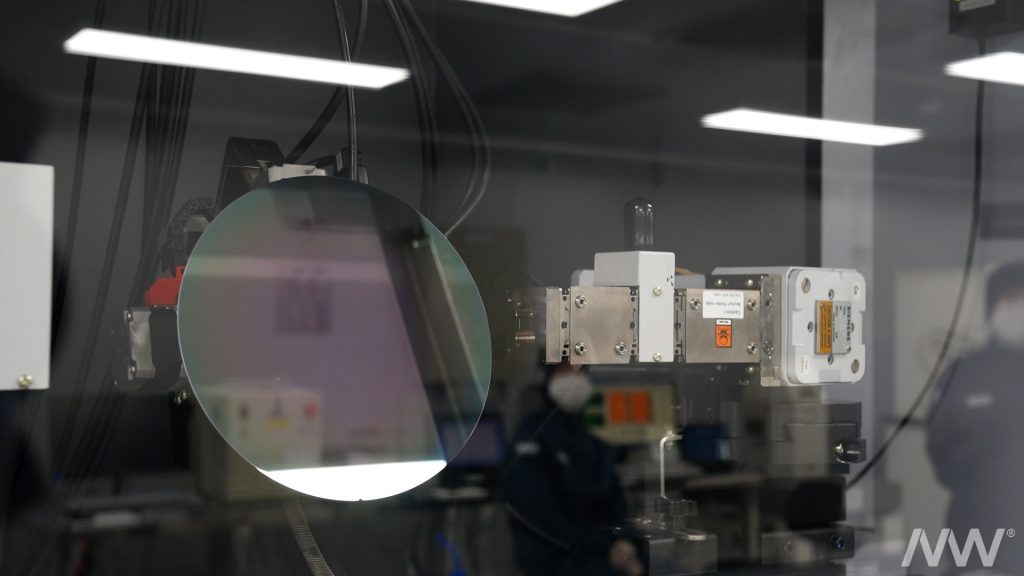
IVWorks has consistently been at the forefront of emerging technology trends in manufacturing. Over the past three to four years, RPA has been actively promoted in the financial sector and other different industries. Its value became especially evident during the COVID-19 pandemic when maintaining Business Continuity Plans (BCP) was at risk. However, the manufacturing industry, characterized by complex production processes or manufacturing lines, may find the practical application of RPA more challenging when compared to fields such as IT, financial accounting, human resources, and logistics.
Equipment control in the epitaxy process is especially challenging, requiring a high level of technical expertise as it involves process control at the atomic level. Even minor variables can significantly impact productivity, thus requiring engineers to maintain constant vigilance throughout the process. The epitaxial process is very complex and often requires the knowledgeable judgment of an engineer. IVWorks is currently actively developing Intelligent Automation based on DOMM. This is not a conventional RPA solution where a ‘B’ solution is simply produced for an ‘A’ problem. In other words, our requirements extend beyond what a standard RPA can offer.
‘RPA development’ was required to establish Intelligent Automation as a technical tool.
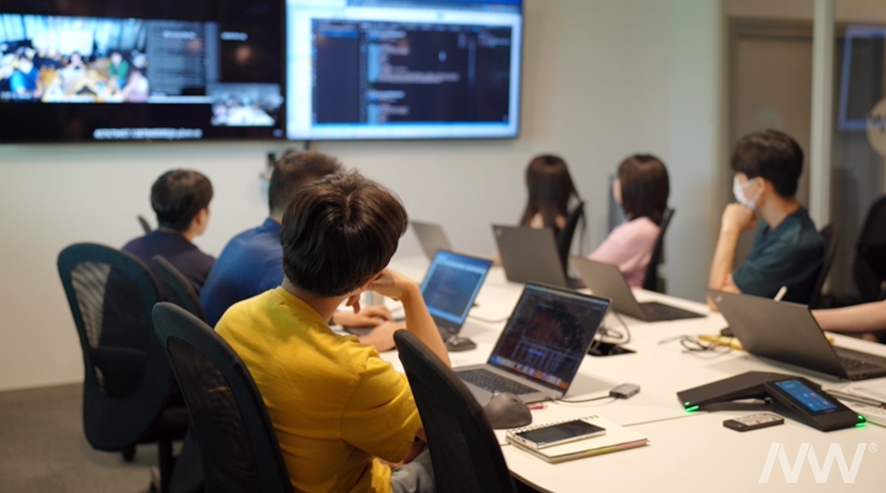
Hence, IVWorks has successfully integrated the Emergency Response DOMM RPA into a production equipment for demonstration purposes, and it is currently operating in stable manner. How does it specifically assist engineers in their tasks?
The newly implemented ‘Emergency Response (Emergency response measures after anomaly detection)’ DOMM RPA is designed to rapidly respond to emergencies and improve productivity. Its core function lies in creating an efficient Emergency Response System. For example, consider a scenario where there is a rotation error, causing the platen loaded in the vacuum chamber to spin inappropriately. In this situation, the source beams emitted from the shutter cannot uniformly grow on the substrate, potentially leading to significant productivity issues. If an engineer is unable to address the error due to various circumstances, such as night time, vacation, meetings, or during crucial experiments, then the process might result in failure. To mitigate these types of situations, DOMM RPA is programmed to consider three types of scenarios and respond appropriately to each event.
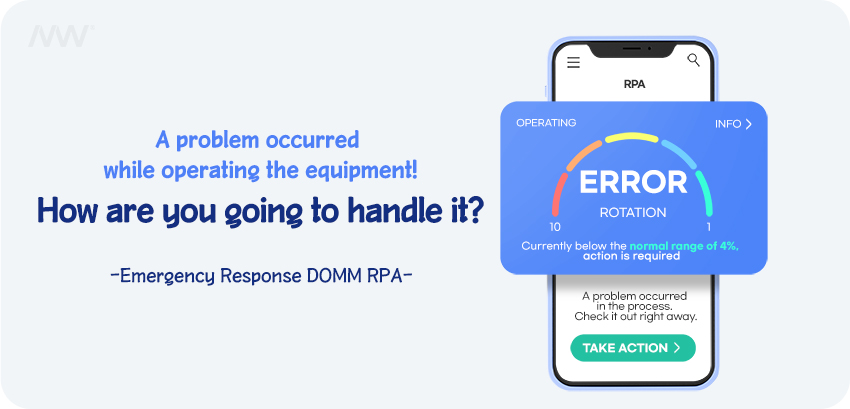
The first scenario is when an engineer can directly intervene and take action. As IVWorks’ entire growth equipment array is linked to DOMM, which has the capability to send alerts to engineers upon detecting anomalies (event occurrences), it serves as an around-the-clock monitoring system, hence the nickname ‘Stalker’ for RPA (more details can be found on the IVWorks YouTube channel).
These alert messages provide detailed information about the issues at hand, enabling engineers to monitor specific situations in real-time. If an engineer deems the current process unaffected by the alert based on this information, they can command the DOMM RPA to ‘Run the Equipment as is.’ If in-person status verification or swift responses are possible, then ‘Direct Action’ can be taken. This allows for the application of engineers’ technical expertise and informed judgment by facilitating actions like leaving comments and more.
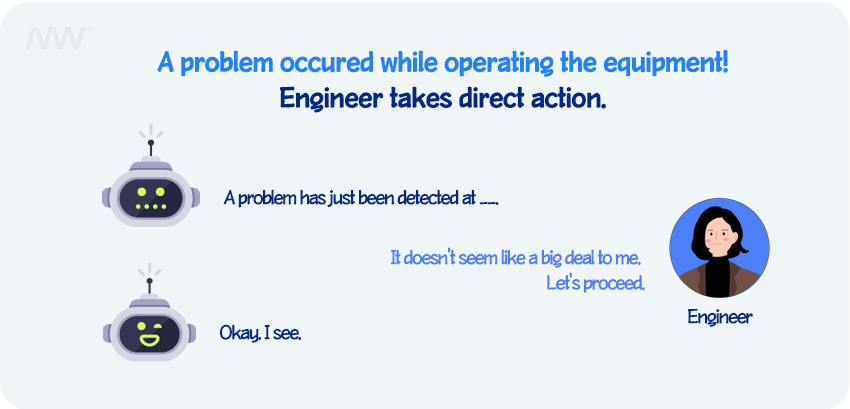
The second scenario arises when an engineer is not on-site (Fab). In these types of cases, DOMM RPA is designed to remotely receive and execute tasks from the engineers. Engineers who are away from the equipment due to other responsibilities can command specific actions to the DOMM RPA when an event arises. In this case, the DOMM RPA has a grace period of approximately 10 s before it commences the tasks, during which the ‘Stop’ command can be issued at any time. The system also provides updates on whether the commands were executed correctly via messages. At IVWorks, a team of at least three engineers is assigned to each piece of equipment. To prevent any confusion among team members, all task actions are recorded in a history log. If multiple engineers request actions simultaneously, then the system prioritizes the first request that arrives.

The third scenario pertains to off-duty hours. If an engineer does not respond within five minutes of an event detection, then the DOMM RPA autonomously takes action. This design effectively reflected the engineers’ feedback and requests. Given their perspective that automatic intervention during regular work hours is not as vital, the system is programmed to issue varying action commands to the DOMM RPA for two distinct time windows: midnight to 7 am (night time) and 7 am to 8 am (just before work begins). Therefore, different automated tasks are executed during the night when immediate action may not be possible, and in the early morning when engineers can intervene upon arriving at work. If an engineer is awake and initiates an action during the night, then the RPA will not automatically interfere. This flexible approach to DOMM RPA’s automatic intervention takes the broader situation into consideration.
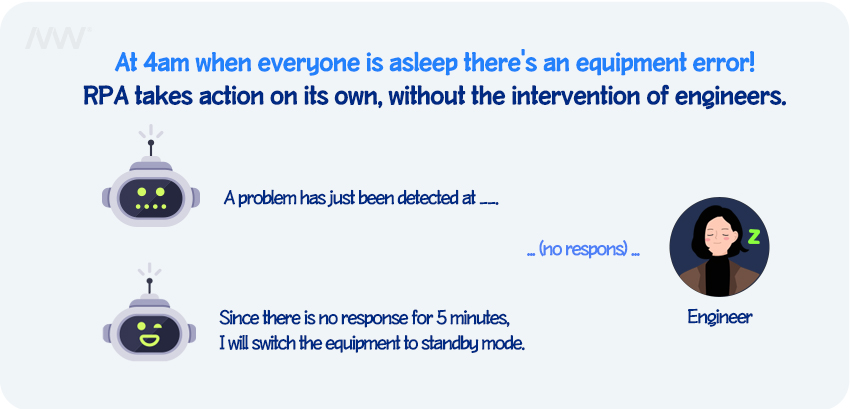
At the end-user testing phase, developers and actual users (i.e., engineers) collaborated through several tests to exchange their viewpoints. A notable aspect of the testing process was the high degree of user feedback incorporated into the overall development of the DOMM RPA. Engineers expressed significant satisfaction with the DOMM RPA’s execution strategies, which reflected the unique processes and work nature of IVWorks, and its ability to respond flexibly to various situations. This suggests that the DOMM RPA is not merely an ordinary implementation of RPA providing predefined solutions, but rather an adaptation specifically tailored to the authentic characteristics of IVWorks.

MK, a senior researcher who participated in the user testing, expressed optimism, saying, “The application of DOMM RPA enabled us to identify problems, take relevant actions/measures, and increase the experiment stability even in the absence of engineers. We expect that it can further contribute to more products and higher experiment stability through continuous improvement.”
The scope of DOMM RPA research at IVWorks is not limited to Quality Measurement Automation and Emergency Response. As full production automation remains a challenge, particularly given the technical complexities associated with compound semiconductor material production, building an RPA environment needs ambitious endeavor. However, our researchers are hopeful given the smooth development process thus far as part of constructing Intelligent Automation, and its stable implementation in practice. The essence of IVworks is an intellectual research group. Whether research is in production or development, we are all building the foundation to move forward as epi specialists.
Yoon-Seo Cho l Marketing Assistant at IVWorks
※This article reflects the subjective opinions of the contributor and may differ from the official position of IVWorks

